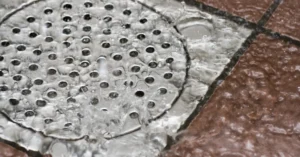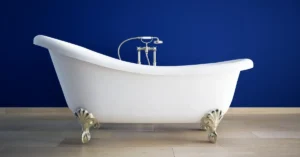So your plumber just fixed something, and now… the water pressure is terrible. The shower barely sprays. The kitchen faucet feels like it’s wheezing. You twist the knobs, hoping it’ll suddenly kick back in, but nothing changes.
If this sounds familiar, you’re not alone. A lot of homeowners experience low water pressure after plumbing repair, and it can feel confusing or even frustrating, especially when you thought the repair was supposed to help.
In this article, we’ll break down what’s really going on, what might be causing the pressure drop, how to test and fix it, and when it’s time to call in a professional. We’ll keep it simple, straight to the point, and helpful, just like you’d expect from Solid Plumbing & Drains, Inc.
Why Would Water Pressure Drop After a Plumbing Repair?
Let’s say you had a new pipe installed, a leak fixed, or your water heater replaced. Everything looked fine, until you turned the water back on.
A sudden change in pressure is almost always a sign that something is either blocked, restricted, or temporarily out of balance. Sometimes it’s part of the process and resolves on its own. But other times, it’s a red flag that needs immediate attention from professional plumbing repair services.
Who Experiences This?
This problem often happens after:
- Pipe replacements or repiping
- Faucet or valve repairs
- Water heater installations
- Toilet or fixture upgrades
- Emergency plumbing work (burst pipe, leaks, etc.)
Whether you’re a homeowner, renter, or property manager, knowing what to do about low water pressure after plumbing repair can save you a ton of time and frustration.
What Causes Low Water Pressure After Plumbing Work?
Let’s go through the most common causes of low water pressure after plumbing repair. One of these is likely the issue you’re facing:
1. Air in the Pipes
After a plumbing job, especially if the water supply was turned off, air can get trapped inside the pipes. When you turn on a faucet, the water kind of “spits” or comes out weakly — because it’s fighting against air pockets.
How to Fix It:
Run each faucet in your home on both hot and cold settings for a few minutes. Start with the highest faucet (like an upstairs bathroom) and work your way down. This helps flush the air out and can resolve many cases of low water pressure after plumbing repair.
2. Debris or Sediment Loosened During Repair
Sometimes, old pipes have a layer of rust or minerals built up inside. When you repair or replace part of the system, that gunk can break loose and clog aerators, valves, or filters further down the line.
What to Do:
- Unscrew the faucet aerator (the small screen at the tip of your faucet). Rinse it out.
- Flush toilets and test showers for consistent pressure.
- If pressure is still low, the blockage might be deeper inside the pipe.
3. Partially Closed Valves
During the repair, your plumber or city utility might have shut off the main water valve or individual shutoff valves to isolate the problem area. If someone forgets to open the valve all the way afterward, your water flow will be weaker.
Where to Check:
- The main shutoff valve (usually near your water meter)
- Individual supply valves under sinks, toilets, and behind appliances
Make sure these are fully turned on to prevent ongoing low water pressure after plumbing repair.
4. Pressure-Reducing Valve (PRV) Shifted
Some homes have a PRV near the water main. This device keeps water pressure safe and steady. But if a repair disturbs it — or if it wasn’t reset properly — it might reduce your water pressure too much.
You Might Need to:
- Locate your PRV (ask your plumber if you’re not sure)
- Adjust the screw slightly to increase pressure
- Or call a plumber to test it with a pressure gauge
5. New Fixtures Are Restrictive
If your repair included new faucets, showerheads, or toilets, they might be low-flow models that naturally reduce water pressure to save water. That’s great for the environment — but frustrating if you’re used to stronger flow.
Tip: Check the manufacturer’s specs. Some fixtures include removable flow restrictors that can be adjusted for better pressure. The EPA’s WaterSense program provides guidelines on efficient fixtures that maintain good performance.
6. Plumbing Work Revealed a Bigger Issue
Sometimes, a repair uncovers a larger underlying problem:
- Old pipes that are too narrow or clogged
- Corroded lines that need full replacement
- Poor water pressure from the city supply
If that’s the case, fixing one area may not be enough to solve the overall problem causing low water pressure after plumbing repair. You can learn more about our full plumbing services here.
How to Test Your Water Pressure at Home
Want to check the pressure yourself before calling anyone about your low water pressure after plumbing repair? Here’s a simple test:
What You’ll Need:
A cheap water pressure gauge (available at most hardware stores)
Steps:
- Turn off all water-using appliances (showers, dishwashers, etc.)
- Screw the gauge onto an outdoor spigot or laundry faucet
- Open the faucet all the way and read the gauge
Pressure Guidelines:
- Ideal pressure: 40–60 psi
- Too low: Under 40 psi
- Too high: Over 80 psi (which can cause damage)
If your pressure is low across the whole house, it’s likely a main line or valve issue. If it’s only low in one area, it could be a clogged aerator, dirty filter, or faulty fixture causing localized low water pressure after plumbing repair.
How to Fix Low Water Pressure After a Plumbing Repair
Here’s a quick troubleshooting checklist for resolving low water pressure after plumbing repair:
- Run faucets to remove trapped air
- Check and clean all aerators and showerheads
- Make sure all valves are fully open
- Inspect the PRV if you have one
- Flush debris from water heater if it was part of the repair
- Try testing pressure with a gauge
If the issue only affects hot water: the water heater might need attention through professional water heater maintenance.
If none of these work — don’t keep guessing. That’s where pros like us come in to properly diagnose and fix low water pressure after plumbing repair.
When to Call a Plumber
It’s time to get help for your low water pressure after plumbing repair if:
- Water pressure is still low after 24–48 hours
- You can’t identify where the problem is coming from
- You suspect a leak or hidden blockage
- There’s visible corrosion, old galvanized piping, or unusual noise in the lines
- Pressure drops happen suddenly or repeatedly
You don’t want to risk burst pipes, appliance damage, or another surprise repair bill. Consider scheduling preventative maintenance to avoid future issues.
Our trained team at Solid Plumbing & Drains, Inc. uses professional tools to pinpoint the cause and restore your home’s water pressure quickly and safely.
Can This Be Prevented in the Future?
Absolutely. A few simple habits can help prevent low water pressure after plumbing repair:
- Schedule regular plumbing inspections
- Flush your water heater once a year to remove sediment
- Replace old pipes if they’re showing signs of age
- Talk to your plumber about upgrades that won’t reduce pressure
- Choose fixtures that balance water savings with solid performance
Consider our Solid Care Plan for just $144/year to keep your entire plumbing system running smoothly and prevent pressure problems before they start.
Understanding Water Pressure in Your Home
To better understand why you might experience low water pressure after plumbing repair, it helps to know how your home’s water system works. Water pressure depends on several factors including your home’s elevation, distance from the water source, pipe diameter, and the condition of your plumbing system.
According to American Water Works Association guidelines, residential water pressure should typically fall between 30-80 psi, with 40-60 psi being optimal for most household needs. When repairs disrupt this delicate balance, pressure issues can occur.
Final Thoughts: Don’t Settle for Weak Water
It’s disappointing when you expect things to work better after a plumbing repair, not worse. But low water pressure after plumbing repair doesn’t mean the job was done wrong. It usually means something got overlooked or shifted during the repair, and with the right attention, it can be fixed fast.
Most cases of low water pressure after plumbing repair can be resolved with simple troubleshooting steps. However, persistent pressure problems may indicate underlying issues that require professional attention.
Still Stuck With Low Water Pressure?
Let’s get it flowing again. The team at Solid Plumbing & Drains, Inc. is just a call away and ready to help you figure out what went wrong with your low water pressure after plumbing repair — and make it right.
We’ll find the problem, explain it in simple terms, and get your water back to full strength. Contact us today to schedule your pressure fix.



